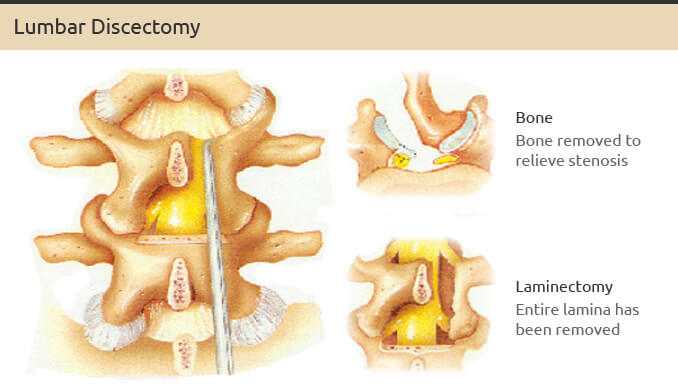Negotiating a Car Accident Settlement After a Lumbar Discectomy

Negotiating a Car Accident Settlement After a Lumbar Discectomy
If you’ve been in a car accident and have undergone a lumbar discectomy, you may be wondering how to go about negotiating a settlement. This can be a tricky process, but there are some basic things you should keep in mind. First, it’s important to understand the extent of your injuries and the potential long-term effects. You’ll also need to factor in any lost wages and medical expenses. Once you have a clear idea of your damages, you can start negotiating with the other driver’s insurance company.
It’s important to remember that insurance companies are not on your side. They’re motivated by their bottom line, not by doing what’s right for you. So, don’t be afraid to be assertive in your negotiations. You may need to hire an attorney to help you get the full amount you deserve.
If you’ve been in a car accident and have undergone a lumbar discectomy, you know that the recovery process can be long and difficult. You may be wondering how to go about negotiating a settlement with the other driver’s insurance company. This can be a tricky process, but there are some basic things you should keep in mind.
First, it’s important to understand the extent of your injuries and the potential long-term effects. Your doctor can give you an idea of what to expect in terms of your recovery. You’ll also need to factor in any lost wages and medical expenses. Once you have a clear idea of your damages, you can start negotiating with the other driver’s insurance company.
It’s important to remember that insurance companies are not on your side. They’re motivated by their bottom line, not by doing what’s right for you. So, don’t be afraid to be assertive in your negotiations. You may need to hire an attorney to help you get the full amount you deserve.
What Is a Lumbar Discectomy?
A lumbar discectomy is a type of surgery that is performed to relieve pain in the lower back. This procedure is typically performed when other treatments, such as physical therapy and medication, have failed to provide relief. The goal of a lumbar discectomy is to remove a herniated disc or bone spur that is pressing on a nerve.
There are a few different types of lumbar discectomy, which include open, minimally invasive, and endoscopic. The type of surgery that is best for you will depend on your individual condition.
Open lumbar discectomy: During this type of surgery, an incision is made in the lower back, and the muscles are moved to the side to expose the spine. The surgeon then removes the herniated disc or bone spur and may also use special instruments to trim away any rough edges. The incision is then closed with stitches or staples.
Minimally invasive lumbar discectomy: This type of surgery is similar to an open lumbar discectomy, but the incision is much smaller. Minimally invasive surgery requires special instruments and techniques.
Endoscopic lumbar discectomy: This type of surgery is performed using a small camera, called an endoscope, which is inserted into the back through a small incision. The surgeon then uses special instruments to remove the herniated disc or bone spur.
After a lumbar discectomy, it is normal to feel some pain and discomfort. However, this should gradually improve over time. Physical therapy may be recommended to help you regain strength and flexibility.
It is important to follow your surgeon’s instructions and attend all follow-up appointments. Most people who have a lumbar discectomy experience a significant decrease in pain and an improvement in function.
How a Lumbar Discectomy is Performed
A lumbar discectomy is a minimally invasive surgical procedure that is used to relieve pain in the lower back and legs. This procedure is typically performed on patients who have herniated discs or degenerative disc disease.
The surgery is performed under general anesthesia and usually takes about an hour. The surgeon will make a small incision in the lower back and then insert a thin, flexible tube called a cannula. The cannula is used to visualize the disc and surrounding structures.
Using a small scalpel, the surgeon will then remove the herniated or damaged portion of the disc. Once this is done, the surgeon will clean up the area and then close the incision with sutures or staples.
After the surgery, patients will typically stay in the hospital for one or two nights. They will then be able to go home and recover. Recovery time is typically four to six weeks.
Lumbar discectomy is a safe and effective procedure that can provide relief from pain that is caused by a herniated disc or degenerative disc disease. If you are experiencing pain in your lower back or legs, talk to your doctor to see if this procedure is right for you.
How a Lumbar Discectomy Affects a Car Accident Settlement
A lumbar discectomy is a surgical procedure that is used to treat a herniated disc in the lower back. This condition can be very painful and debilitating, and can make it difficult to walk or even stand. If you have been in a car accident and have suffered a lumbar discectomy, you may be wondering how this will affect your car accident settlement.
There are a few things to keep in mind when it comes to a lumbar discectomy and a car accident settlement. First, you will need to prove that your injuries were caused by the car accident. This may require getting medical records and/or testimony from your doctor. Second, you will need to show that your injuries are serious and will have a lasting impact on your life. Again, medical records and doctor testimony can be very helpful in proving this.
Finally, you will need to prove the cost of your medical bills and any other damages you have incurred as a result of the accident. This includes things like lost wages, pain and suffering, and any other costs you have incurred. Once you have gathered all of this information, you will need to negotiate with the insurance company to reach a fair settlement.
If you have been in a car accident and have suffered a lumbar discectomy, don’t try to handle the insurance claim on your own. Contact an experienced car accident attorney who can help you get the compensation you deserve.
Understanding Liability in a Car Accident
A car accident can be a very traumatic event. Not only are you dealing with the physical damages of the accident, but also the mental and emotional stress that comes with it. One of the most stressful aspects of a car accident is understanding who is liable for the damages. Depending on the severity of the accident, you may be dealing with expensive medical bills, vehicle repairs, and even lost wages from being unable to work. In a serious accident, you may even be facing a long recovery process.
When it comes to car accidents, there are two main types of liability: fault and no-fault. Fault liability means that the person who caused the accident is responsible for the damages. No-fault liability means that each driver is responsible for their own damages, regardless of who caused the accident.
Most states have a no-fault system in place when it comes to car accidents. This means that your own insurance company will cover your damages, up to a certain limit. In some states, you may also have the option to file a personal injury claim against the other driver if your damages exceed the limit of your insurance coverage.
If you live in a fault state, then the driver who caused the accident will be responsible for your damages. If the other driver does not have insurance, you may be able to file a claim with your own insurance company. If you have uninsured motorist coverage, it will cover your damages up to a certain limit.
It’s important to understand the liability laws in your state so that you know what to expect after a car accident. If you have any questions, be sure to speak with an experienced car accident attorney. They can help you understand your rights and options under the law.
Calculating Damages for a Car Accident Claim
After a car accident, you may be wondering how to calculate the damages for your claim. The first step is to determine the property damage to your vehicle. This can be done by obtaining estimates from auto body shops or using online resources. The next step is to calculate your medical expenses. This includes any hospital bills, doctor’s visits, medication costs, and therapy costs. You will also need to factor in any lost wages if you were unable to work due to your injuries. Pain and suffering is more difficult to calculate, but you can start by considering the physical and emotional anguish you have experienced as a result of the accident. Once you have all of this information, you can start to negotiate with the insurance company for a fair settlement. If you are not able to reach an agreement, you may need to file a lawsuit.
Pain and Suffering Damages from a Car Accident
Pain and suffering damages are one of the most common types of damages that are awarded in car accident cases. If you have been in a car accident and have suffered pain and suffering as a result, you may be wondering how these damages are calculated and whether or not you will be able to receive them.
Pain and suffering damages are intended to compensate an accident victim for the physical and emotional anguish that they have suffered as a result of the accident. These damages are usually calculated by looking at the victim’s medical bills and other financial losses that they have incurred as a result of the accident.
There is no set formula for calculating pain and suffering damages, but there are some general guidelines that courts typically use. For example, many courts will multiply the victim’s medical bills by a certain amount to arrive at a pain and suffering damages award.
Another common method for calculating pain and suffering damages is to use a “per diem” approach. Under this approach, the court will award a certain amount of money for each day that the victim suffered pain and suffering. The number of days that are used in this calculation will depend on the severity of the victim’s injuries.
It is important to note that pain and suffering damages are not always awarded in car accident cases. In some cases, the court may find that the victim did not suffer any appreciable pain and suffering as a result of the accident. In other cases, the court may find that the victim’s pain and suffering was caused by something other than the car accident (for example, a pre-existing medical condition).
If you have been in a car accident and have suffered pain and suffering, you should discuss your case with an experienced personal injury attorney. An attorney will be able to help you understand the law and will fight for your right to receive compensation for your injuries.
Discussing Car Accident Settlements With an Attorney
No one ever wants to be in a car accident. But if you unfortunately find yourself in one, you’ll want to know what to do next. And part of that is understanding how car accident settlements work.
Of course, every accident is different. So it’s hard to say exactly how much your settlement will be. But there are some things that will impact the amount, like:
• How much damage was done to your car?
• How serious were your injuries?
• Was the other driver clearly at fault?
• Do you have good insurance coverage?
There are also other factors that can come into play. So it’s important to discuss your case with an experienced car accident attorney. They can help you understand what to expect and how to get the maximum settlement possible.
Negotiating a Settlement for Lumbar Disc Injury
It is not uncommon for people to experience some kind of back pain in their lifetime. However, if you have suffered a lumbar disc injury due to a car accident, you may be wondering how to go about negotiating a settlement.
The first thing you should do is seek medical attention. This will not only ensure that you get the proper treatment for your injuries, but it will also provide you with documentation of the accident and your injuries. This documentation will be essential when it comes time to negotiate a settlement.
Once you have seen a doctor and have all of your documentation in order, you should start by reaching out to the other party’s insurance company. If you were not at fault for the accident, their insurance should cover the cost of your medical bills and any other damages you have incurred.
When you contact the insurance company, be sure to have all of your documentation ready to go. This includes any medical bills, police reports, and eyewitness accounts. The more information you can provide, the better your chances will be of reaching a fair settlement.
Once you have submitted your claim to the insurance company, the adjuster will likely try to lowball you. They may try to say that your injuries are not as severe as you claim or that the accident was partially your fault. Do not accept their first offer.
Instead, counter their offer with a fair amount that you feel adequately compensates you for your injuries. If they continue to lowball you, you can always bring in an attorney to help with the negotiation process.
Getting fair compensation for a lumbar disc injury can be a long and difficult process. However, if you are prepared and know what to expect, you can increase your chances of reaching a fair settlement.
Finalizing a Car Accident Settlement
No one ever wants to be in a car accident. But if you are, one of the first things you’ll have to do is figure out how to deal with the insurance companies. If the accident was your fault, your insurance company will be there to help you through the process. But if the accident was someone else’s fault, you’ll have to deal with their insurance company. And that can be a little more complicated.
The first step is to file a claim with the other person’s insurance company. You’ll need to give them some basic information about the accident, as well as any information you have about the other driver. The insurance company will then investigate the accident and make a determination of who was at fault.
Once fault has been determined, the next step is to negotiate a settlement. This is where things can get a little tricky. The insurance company will likely offer you a Settlement Amount that is less than what you think you deserve. This is where it’s important to have an experienced car accident attorney on your side. An attorney will know how to negotiate with the insurance company to get you the best possible settlement.
Once a settlement has been reached, the next step is to finalize the settlement. This usually involves signing a release of liability, which basically means that you agree to accept the Settlement Amount and you will not file any further claims against the other driver or their insurance company. Once the release has been signed, the insurance company will send you a check for the Settlement Amount. And that’s it! You’re done!
Of course, every car accident is different. And not all settlements will go as smoothly as the one described above. But this is generally how the process works. So if you find yourself in a car accident, don’t panic. Just take a deep breath and follow the steps outlined above.
What to Do After the Car Accident Settlement is Reached
After a car accident, it is often unclear what the next steps are. If you have been in an accident, and a settlement has been reached, there are a few things you should do in order to ensure you are taking the proper next steps.
First, if you have not already done so, you should seek medical attention. Even if you do not feel like you have been seriously injured, it is important to get checked out by a medical professional. Often, injuries from car accidents do not present themselves immediately. By getting a medical opinion, you can be sure that you are not overlooking any potential injuries.
Next, you should reach out to an experienced personal injury lawyer. A lawyer can help you understand the details of your settlement, and can also help you determine if you are being offered a fair amount. Oftentimes, insurance companies will try to lowball victims of car accidents, in hopes that they will take a smaller settlement. A lawyer can help you make sure that does not happen.
Finally, once you have sought medical attention and contacted a lawyer, you should take some time to rest and recover. A car accident can be a traumatic event, both physically and emotionally. It is important to give yourself time to heal before returning to your normal routine.
If you have been in a car accident, and a settlement has been reached, following these steps can help you ensure that you are taking the proper next steps.





